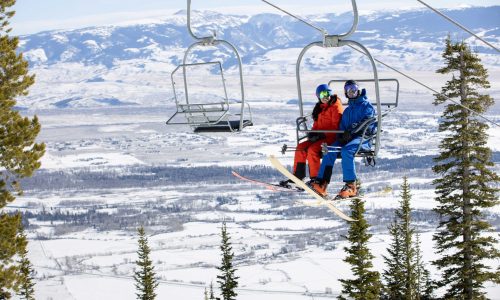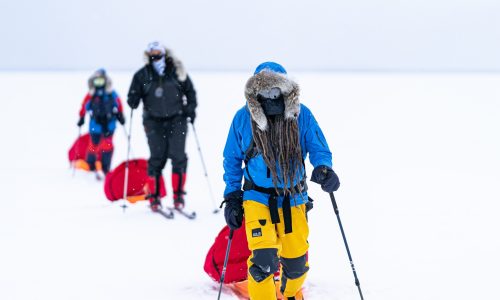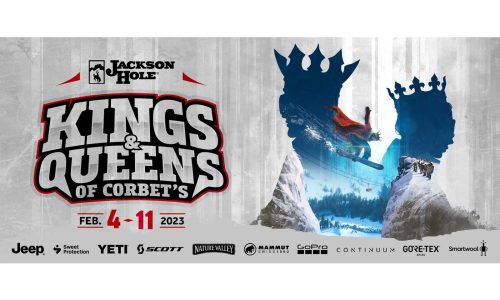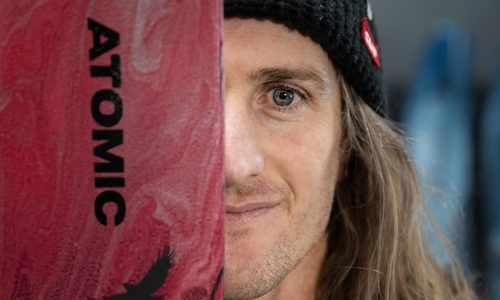Home » Gear Reviews » Ski & Snow » Ski Jackets » Columbia Heatzone 1000
Columbia Heatzone 1000 Review
October 14, 2015 80
80 The Good
- Very warm
- Lightweight
- Inexpensive for a 900 fill down coat
The Bad
- Less durable face fabric
- No vents
The Columbia Heatzone 1000 is an extremely warm, very lightweight ski jacket containing some groundbreaking design technology. This jacket is one of the warmest jackets in the test. However, while the jacket nails the heat, there are very few additional features in this jacket.
Durability
The Heatzone 1000 is designed to be a beefed up down puffy. Down lofts best with lighter face fabrics, so the Heatzone suffers a little bit here despite softshell fabric on the shoulders, hood and arms.
Weatherproofness
The above mentioned softshell fabric adds weatherproofing to areas that get soaked first in a traditional puffy down coat. The entire coat is treated with a DWR that sheds normal snowfall. But it’s still not necessarily suited for “snain” and other marginal conditions.
Breathability
Down coats tend to be more breathable than synthetic insulated coats and rarely get clammy, though the Heatzone lacks pit zips or other vents to bleed off heat without taking the jacket off.
Features
In going for lightweight, Columbia cut down on amenities on the Heatzone, though there are still six pockets, including the forearm pass pocket. It’s a relatively minimalistic design without a powder skirt.
Function
The Heatzone is designed for one thing: warmth. On that score it succeeds beautifully. It’s got a long hem, insulated hood, and tall collar to keep wind and blowing snow at bay. The Heatzone features some ground breaking design technology—Columbia has essentially re-invented the down parka. To solve the cold spots at the seams between baffles, the Heatzone welds a second, alternating layer atop the first similar to the way shingles are stacked on a roof. Water-resistant, 900-fill feathers fortified by a thin layer of absorbent synthetic insulation keep the coat from losing its loft in soggy conditions. Throw in Columbia’s signature Omni Heat system—metalic microdots on the interior fabric that reflect heat back upon the wearer a la a space blanket—and you’ve got a hell of a warm coat.
All the ski jackets and pants reviewed are tested by the same five criteria; materials, features, weatherproofness, temperature control and fit/comfort. All the pieces were tested over multiple days in a variety of conditions to see how they perform throughout an entire ski season. Testers do all they can to try out every piece on the same day to compare each one in similar conditions and they get out on lots of days to test the jackets in a range from sunny spring days to stormy wintery days to see how they hold up.
For materials, the specifications provided by the brands is often very important. These specifications tell us what type (if any) and amount of waterproofing or insulation a jacket may have. With a wide variety of third-party insulating and waterproofing materials available, as well as the recent rise of “in house” proprietary materials being used, it is important to know exactly what fabrics and insulations are being added to each piece in an effort to distinguish what makes one piece better than the next. Since testers typically only have only one season to test these pieces, durability is determined in part by any obvious fraying, ripping or other signs of reduced durability.
Since heavily insulated jackets are primarily intended for lift accessed skiing and riding there is an expectation that features will be tailored to provide the ultimate in comfort and convenience when on the mountain. This means that features such as a powder skirt, pockets for gear, a dedicated pass pocket, a helmet compatible hood, and wrist gaiters are all expected and then extra features such as a RECCO reflector or insulated phone pocket are considered a bonus.
The weatherproofness of a jacket first depends on what the intended purpose of the jacket is and then is based on the specifications that the brands supply. Since most heavily insulated jackets will be used at the resort under cold conditions there is an expectation that the jacket be able to shed blowing snow for the stormiest of days yet also fairly breathable. Since these jackets are for very cold weather, waterproofness isn’t as necessary.
The temperature control of a jacket is also based on the specifications that the manufacturer provides. The line between a lightly and heavily insulated jacket isn’t clear cut but generally one would expect to use a heavily insulated jacket primarily when the temperatures drop well below freezing and need to still be comfortable when the day proceeds to get even colder. The jackets are then rated to how well they do in very cold temperatures and more importantly how well the jacket does when the temperatures fluctuate which is a common occurrence for any regular snow sports enthusiast. Breathability plays a big factor here because the breathability of a jacket will affect how warm or cold one feels as heat generated while skiing and then go sit on a long chair lift afterwards. The ability to fully unzip pit zips is a crucial part of temperature control since that is often the largest factor in preventing overheating.
Lastly, the fit and comfort category is fairly subjective but having multiple testers use the product provides for a good range of body shapes and opinions. Factors that are important here are how long or short a jacket is and if it is true to size. For determining comfort, the amount of stretch the jacket has and how soft it is on the inside often plays into the rating.

















